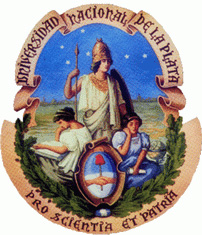Education in state institutions is at the initial, primary, secondary and tertiary levels and in the undergraduate university level. Private education is paid, although in some cases state subsidies support its costs. According to studies by UNESCO, education in Argentina and Uruguay guarantee equality to have institutional features that hinder the commercialization of education, as well as Finland has characteristics that favor multiethnic population education and special education, education favors Argentina equality. According to the last census, the illiteracy rate is 1.9%, the second lowest in Latin America. In the last decade, Argentina has created nine new universities, while the outflow of university students increased by 68%.

San Juan Province is a province of Argentina, located in the western part of the country. Neighbouring provinces are, moving clockwise from the north, La Rioja, San Luis and Mendoza. It borders with Chile to the west.

San Juan is the capital city of the Argentine province of San Juan in the Cuyo region, located in the Tulúm Valley, west of the San Juan River, at 650 m (2,133 ft) above mean sea level, with a population of around 112,000 as per the 2001 census [INDEC].

The National University of the Patagonia San Juan Bosco is a higher education establishment in Patagonia, southern Argentina. It was created on February 25, 1980, by law 22.713, as the merge of two national universities: the "Universidad de San Juan Bosco" and "Universidad Nacional de la Patagonia". It is named after San Juan Bosco, patron saint of the area.
An undergraduate degree is a colloquial term for an academic degree earned by a person who has completed undergraduate courses. In the United States, it is usually offered at an institution of higher education, such as a college or university. The most common type of these undergraduate degrees are associate's degree and bachelor's degree. Bachelor's degree typically takes at least three or four years to complete. In some other educational systems, undergraduate education is post-secondary education up to the level of a master's degree; this is the case for some science courses in Britain and some long-cycle medicine courses in Europe. These degrees can be categorised as basic or first professional degrees.

The National Technological University is a country-wide national university in Argentina, and considered to be among the top engineering schools in the country. Hosting over 75,000 students, its student body is comparable to Argentina's third-largest university and exceeded significantly only by the University of Buenos Aires (UBA). It has 29 semi-independent branches of various sizes located all over the country.

The La Plata National University is one of the most important Argentine national universities and the biggest one situated in the city of La Plata, capital of Buenos Aires Province. It has over 90,000 regular students, 10,000 teaching staff, 17 departments and 106 available degrees.

The National University of Rosario is a research public university located in the city of Rosario, province of Santa Fe, Argentina.

The National University of Cuyo is the largest center of higher education in the province of Mendoza, Argentina.

The National Atomic Energy Commission is the Argentine government agency in charge of nuclear energy research and development.

The National University of Tucumán is an Argentine national university located in Tucumán Province and the largest in Argentina's northwest region. Founded on 25 May 1914 in San Miguel de Tucumán, access to the university is unrestricted and free of charge.

The National University of Córdoba is an institution of higher education in the city of Córdoba, Argentina.

The Pontifical Catholic University of Argentina, also known as Catholic University of Argentina (Spanish: Universidad Católica Argentina, is a private university in Argentina with campuses in the cities of Buenos Aires, Santa Fe, Rosario, Paraná, Mendoza and Pergamino. The main campus is located in Puerto Madero, a modern neighborhoods of Buenos Aires.

The Parque General San Martín is a park located in the city of Mendoza, Argentina.
The National University of San Luis is a public university in Argentina, with its seat in the city of San Luis, capital of the province of the same name, in the Cuyo region. It was created in 1973, along with the National University of San Juan, split off the National University of Cuyo based in Mendoza.

The Universidad Nacional de Asunción or Mbo'ehaovusu Tetãgua Paraguaygua, abbreviated UNA, anglicized as, The National University of Asuncion, is a public university in Paraguay. Founded in 1889, it is the oldest and most traditional university in the country.

The National University of the South is the largest national university in southern Argentina. Its motto is Ardua Veritatem, which means "through the difficulties to the truth".

The National University of Tierra del Fuego, Antarctica and South Atlantic Islands is an Argentine national university in Tierra del Fuego Province. The campus university is located in the city of Ushuaia. The institution was founded through National Law 26.559, enacted by Congress on November 14, 2009, and was formally established on December 28, 2010.















